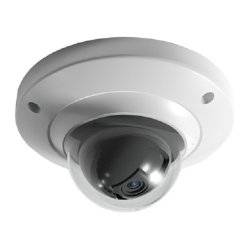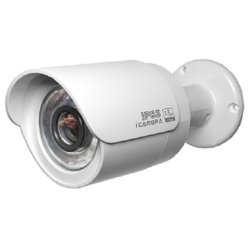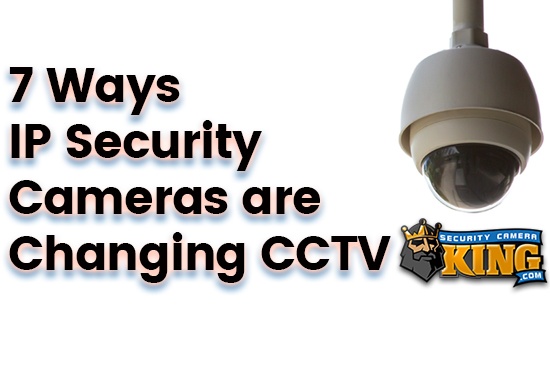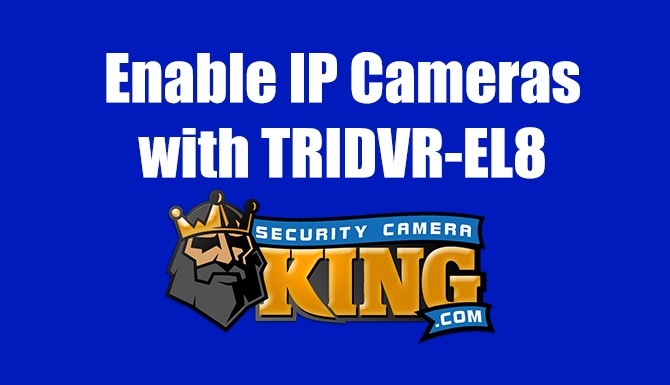The notion of security property through the implementation of security camera systems is not a new concept. Businesses of all types have continually used CCTV and other security camera models to safeguard their product, customers and employees. Perhaps one of the biggest mistakes a property owner can make is relying on outdated technology to maintain high levels of security.
Although the Federal Bureau of Investigation has reported a decline in property crimes throughout the United States, the need to continually monitor and protect your property is higher than ever before. As a business or homeowner, a security camera system not only wards off potential the thieves, but aids law enforcement in the identification and capture process of an investigation.
While the security industry is flushed with various security camera systems, perhaps the most user-friendly and effective for busy professionals is an IP security camera system. Developed to continually monitor property while simultaneously streamlining the ease of viewing the happenings on your property, IP cameras are the next generation of property safeguarding.
What is an IP Security Camera System?
It has been said that knowledge is power. Within the realm of camera security systems, this proverb is rich in truth. While IP security camera systems are among the most user-friendly and powerful methods of property monitoring, few understand exactly how this method of the monitoring works.
IP cameras, which are also known as network cameras or Internet protocol cameras, send and receive data through the Internet or a computer network. A more common camera of this type is a webcam found on virtually every laptop in the country. IP cameras are separated into two types of camera formats:
- Centralized IP Cameras – A centralized IP camera is one that required an NVR, or a Network Video Recorder to actually record images and audio as well as signal an alarm based on the happenings in the area. An NVR is essentially a specialized software program designed to record digital video. These recordings are then sent to a mass storage device such as a disk drive or a USB flash drive. This is a software application, thus it is commonly confused with a DVR, or digital video recorder. The primary difference between an NVR and a DVR is an NVR receives its video and audio from a network while a DVR receives its information directly from the camera, or a direct connection.
- Decentralized IP Cameras – A decentralized IP camera is one that does not require an NVR to operate. Rather, this camera type features built-in recording functionality. The primary benefit of a decentralized IP camera is that it compresses and stores recordings directly to a mass storage device. Decentralized IP cameras are ideal for smaller businesses or homes while centralized IP cameras are best for larger buildings with numerous camera setups.
The primary components of an IP security camera include a lens, memory storage, image processors and an image sensor. The processors of this type of camera act as the brain of the system. They are responsible for the processing incoming images, compressing these images for storage analyzing the videos and dealing with the various functionalities of a network.
The memory within an IP camera also plays a vital role as its responsible for storing the computer programing, or the firmwire, as well as actually storing incoming video sequences. Much like a computer, an IP camera actually has its own IP address. Therefore, the camera directly connects to a specific network. This is where the similarities between an IP camera and a webcam end. Webcams can only operate when directly connected to a computer while an IP camera may operate wherever a network connection exists.
When it comes to viewing images, an IP camera may be configured to stream video in several methods. It may live stream images over an IP network, which is viewable only by authorized users, or it may continuously record video to be viewed later. IP cameras may also be setup to only record at specific time intervals or only when the camera detects motion or audio.
Types of IP Cameras
As with any other type of security camera system, IP security cameras are available in several designs. Of course, these cameras are classified as outdoor or indoor cameras; however, these cameras may also be further categorized. The following are the four most common types of IP cameras:
- Fixed IP Camera – As its name suggests, fixed IP cameras are those that feature a static field of view. The actual lens may vary, which can include wide-angle, telephoto or normal. This type of camera is traditionally used when proper owners wish to make their presence clearly known. Although its field of view is fixed, the lens of this camera may be interchanged depending on its recording needs. These cameras may be used in indoor and outdoor applications.
- Fixed Done IP Cameras – A fixed dome IP camera gains its name as it is installed in a compact dome housing. These cameras may be pointed in a wide variety of directions. The primary benefit of this camera type is its discreet design. Primarily used in businesses, the actual camera may be manipulated; however, onlookers are unable to tell where the camera is pointing. Because the lens of this camera is rarely able to be interchanged, the field of view can typically be adjusted. These cameras may be mounted on ceiling and walls, and they are available in waterproof enclosures for outdoor applications.
- PTZ IP Cameras – PTZ IP cameras are special as these cameras allow the operator to manually zoom, tilt and pan the camera. This camera setup is ideal for large businesses as it allows the operator to track a particular customer or situation. These cameras are typically more advanced than the aforementioned cameras. Some features commonly included in such a camera include an electronic image stabilization system, privacy masking capabilities and auto tracking. Again, these features are ideal for commercial properties; however, residential installations may also benefit from a PTZ IP camera.
- PTZ Dome IP Cameras – Much like the aforementioned dome IP camera, a PTZ dome IP camera enhances the field of view for recording. These cameras are able to capture a full 360-degree pan as well as a 180 degree tilt. Due to their dome design, these cameras are ideal for discreet installations. The camera may be preset to move to particular sections of an area at random or in specified time increments. In larger areas, a PTZ dome IP camera can save a significant amount of money as one PTZ dome camera covers the same field of view as 10 fixed IP cameras.
Benefits of an IP Security Camera System
Perhaps the most notable benefit of IP security cameras is the screen clarity. The minimum image resolution of all IP cameras is 640 x 480 pixels; however, the screen resolution can be enhanced up to HD quality with a recording rate of 30 FPS, or frames per second. Another notable benefit is its ability to be relocated anywhere there is an IP network. This adds a great deal of flexibility, especially in large commercial properties. These cameras may also run through a wireless Internet network. Typically, the user must configure the wireless router to work with the camera. Once configured, the IP cameras may then stream video through wireless networks. This offers even greater flexibility when it comes to camera placement.
The security of an IP camera signal transmission is a great benefit for users. Transmissions are authenticated and encrypted through various methods, which may include WPA, WEP, AES and TKIP. Yet, the most prominent benefit of an IP security camera system is its ability to be remotely accessed. Authorized users may view streaming video from selected cameras on any computer as well as through various smartphone devices. Lastly, IP cameras are able to operate without additional power sources through a PoE-protocol, or a Power over Ethernet. Basically, IP cameras may be connected to a PoE-protocol device, which supplies power to the cameras directly from the Ethernet cable.
Disadvantages of an IP Security Camera System
While IP security camera systems offer benefits not seen in other security camera systems, there are several notable disadvantages. Perhaps the first disadvantage a property owner will notice is a significantly higher cost per camera. While the cost of low-end IP cameras are in line with analogue cameras, advanced level IP cameras are still significantly more expensive than its analogue counterparts. However, as the use of IP cameras increases, expect the price per camera to drop.
Another significant disadvantage is the bandwidth requirements for an IP camera system. A typical IP camera with a 640 x 480 resolution and a 10 FPS rate requires an average of 3 MB per second. Although this may not negatively affect all users, it is worth noting. Lastly, if an IP camera is used through a public wireless signal, it opens up the possibility of third-party monitoring. If done this way, it allows criminals the ability to monitor the store security measures and may actually facilitate criminal activity.
For any further information, please do not hesitate to contact us.


